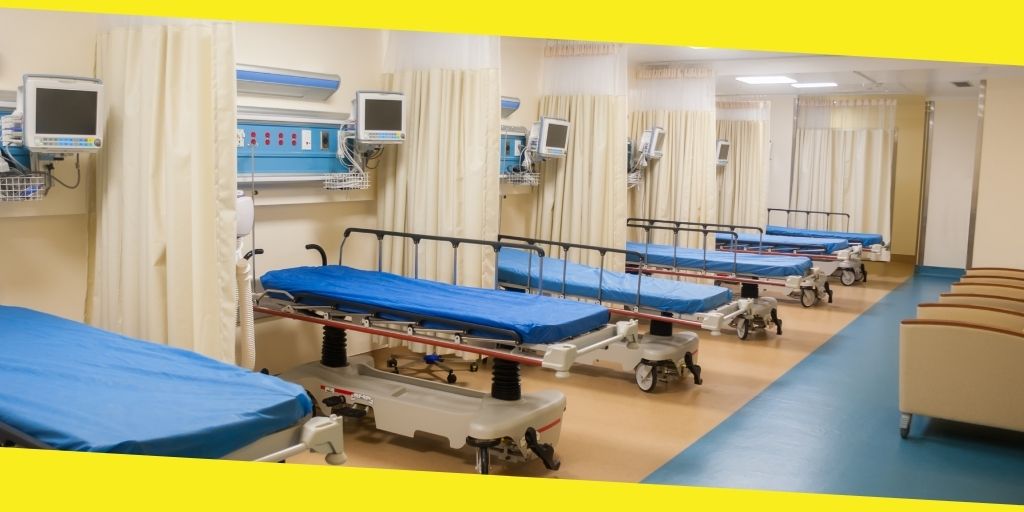Health Conditions That May Need Emergency Room Services
Ideally, many conditions can compel someone to seek emergency room treatment. Many at times, though, people never know the right time to visit the ERs. On the other side, people also have alternatives that range between urgent care clinics and walk-in clinics. Nevertheless, the best part of it all is to know some of the health conditions that may need services from such facilities.

Skin diseases are some of the top concerns people seek to know if they can solve from the emergency room. One such infection is ringworm that may bring significant damages to the skin. While this has been a contested topic of discussion, the truth is that skin infections are better handled at an emergency room in Spring Branch.
It is also worth noting that the best treatment method for most skin infections like ringworm is home remedies that include adopting a good lifestyle. The best ER experts can offer antifungal dosages or more potent medications if the case seems chronic and recurrent. All said, below are some of the other common health concerns that may make someone take that trip to the ER.
Contents
ToggleChest Pains
Chest pains are some of the conditions that may need emergency care. Whether mild or chronic, a patient can never know the extent of the real issue. Apart from getting help from a regular doctor, the emergency room experts know how to deal with dire cardiac situations, but even more common than heart attacks are chest pains.
Though chest pains are still joint in ERs, some reports suggest they’re declining while other conditions such as stomach pains are on the rise. Nevertheless, it cannot be better why patients should seek services from anyone who can help.
Still, doctors advise patients to be aware of other signs that might indicate a situation is life-threatening. “Pressure-like” or “burning” chest pain coinciding with nausea, sweating, or shortness of breath may signify a dangerous situation requiring emergency medical attention. Chest pains should be examined, particularly if the patient has a history of other medical conditions such as diabetes or coronary heart disease.
Abdominal Pain
Abdominal pain is an increasingly common reason to make a trip to any emergency room in Spring Branch. They are usually extending beyond regular indigestion. These conditions can result from a slew of health complications, including food poisoning, kidney stones, or more serious medical conditions or illnesses.
Abdominal pain is one of the leading reasons people visit emergency rooms. Before moving forward to treat patients with abdominal pain, doctors will try to find out if the pain stems from a health problem directly related to the digestive system or if it’s a sign of problems in other areas of the body.
Poisoning is likely to contribute to abdominal pain cases and sends approximately 1,940 people to emergency departments each day. Bacterial and viral infections and organs not functioning correctly can give rise to abdominal pain, too.
Toothaches
Tooth-related issues might not come to mind when you think about the ER, but they’re undoubtedly presented to ER doctors. Sincerely, toothaches remain a common reason to pursue emergency treatment, especially when dentist offices are closed after-hours or during the weekends. Toothaches common causes and persistent symptoms may be in the realm of dental care; however, being in uncomfortable pain is a clear signal that the problem has worsened and requires immediate attention.
Often, patients come in with abscesses or areas filled with pus, within teeth, or in surrounding gum tissue. In situations in which the abscess can be reached, ER doctors will drain it and prescribe pain medications. For pain within teeth resulting from gradual tooth decay or sudden trauma to the tooth, doctors will be limited to giving drugs to alleviate discomfort until patients can make it to the dentist.
Depending on the cost differences, urgent care might be a better option than emergency care. Urgent care centers are often open later than doctors’ offices to treat non-life-threatening medical problems and are generally less expensive than a trip to the ER.
Sprains and Broken Bones
Sprains and broken bones can happen to anyone, regardless of health or age.
They tend to occur when ligaments attached to joints in the body are pushed to their limit or outright torn. Sometimes they happen alongside broken bones and can be caused by twisting an area of the body during movement or physical activity.
But not all sprains require ER care. Most can be deferred to urgent care, where doctors are equally equipped to treat patients and have imaging tools such as X-ray machines to rule out broken or fractured bones.
Broken bones, on the other hand, are more likely to require emergency care, especially if they pose risks to other systems in the body. For instance, a broken rib caused by a car wreck has the potential to puncture vital organs in the chest, whereas a fractured toe might not pose such a risk and is a case more suitable for urgent care.
Cuts and Contusions
Cuts can be intentional or accidental, but the combining factor is the need for immediate treatment. Most cuts are unintentional and result from an accident with a knife or glass. The need for emergency care depends on the cut’s depth, whether it hit bone, the amount of bleeding, and whether there is any debris in the cut area. Smaller cuts, on the other hand, with controllable bleeding, can be addressed at urgent care.
Accidents of any form generally top the list as some of the needs of ER services. While some cases can be mild, chronic situations should be addressed in emergency rooms. In real life, this cannot be any different from what happens in movies.
Back Pain
Believe it or not, back pain is an increasingly common case in the ER. Even though some back pain instances involve gradual soreness, an accident or faulty movement might push someone to strain a back muscle or even harm one of the many bones comprising the spinal column.
Back pain may be caused by daily activities, lifting or twisting the area the wrong way, or a lack of muscles to strengthen the back. On the other hand, back pain may signify another health problem: kidney stones, arthritis, or a herniated disc. This is why back pain in older individuals is worth investigating if it’s not already chronic.
Recommended For You
What Workouts to Try for Rowing at Home
Most Inside
Most Inside offers high-quality recommendations and valuable updates to enhance all aspects of your life, providing premium guidance and enriching experiences.




